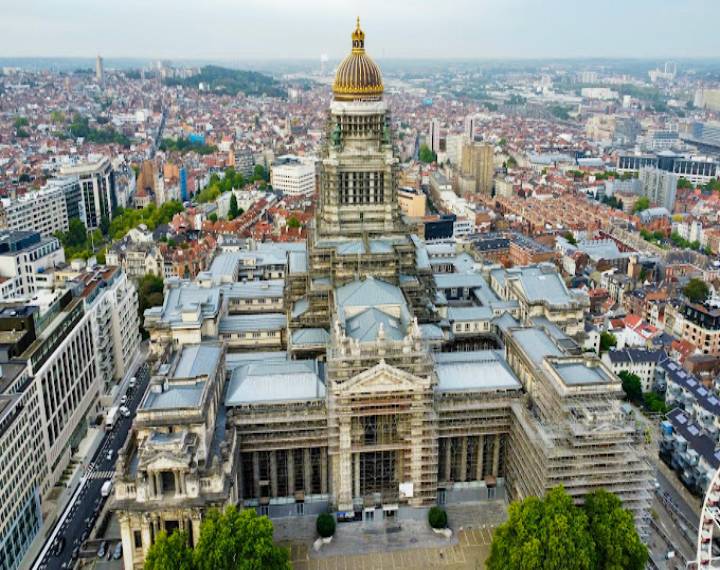
Law Courts of Brussels
Standing in front of this gigantic building leaves you (almost) dizzy. Everything is done to impress, both inside and out. It’s a symbolic place with a long history, built on the (rather aptly named) Mont des Potences, meaning Gallows Hill, where condemned men were executed in the Middle Ages. Legend has it that in the 16th century, the famous doctor Vesalius went there at night to steal corpses so that he could study the human body…
It’s one of the most impressive monuments in Brussels, which also offers a breathtaking panoramic view of lower Brussels.
A little history
In March 1860 (under Leopold I), the Belgian government organised an international competition for the construction of a new courthouse in Brussels. The jury did not select any of the projects presented and the project was instead entrusted to the architect of the City of Brussels (who was on the jury!). Joseph Poelaert’s project was colossal: to synthesise the history of humanity in the architecture of a single building. The construction, which finally began in October 1866, took 17 years. It led to the sacrificing of part of the Marolles, the working-class district in the lower part of the city, through expropriations at derisory prices, evictions and demolitions. The inauguration (under Leopold II) was held on 15 October 1883, without the architect of this colossus having seen his work completed. Exhausted and driven mad, he died four years before the work was completed.
The “Skieven architek” and “The Great Inkwell”…
The monument left no one indifferent. It was adored by some and mocked by others. Poelaert was granted tremendous artistic and financial freedom throughout the project, which led to popular, political and cultural discontent. A number of charming expressions were coined, such as ‘Rotten’ and ‘Skieven architek’ (twisted architect), with the latter being adopted as the name of a café on Place du Jeu de Balle in the heart of the Marolles. Victor Horta described the building as “… a crushing mass crowned by a cheese bell”. Freud praised it highly: “At the top of a steep hill stands a massive building, with columns so beautiful that the whole evokes an Assyrian royal palace or an illustration by Gustave Doré”. Victor Hugo christened it “The Great Inkwell”.
Built in the classical Greco-Roman style and larger than Saint Peter’s Basilica in Rome, it is (still to this day) the largest palace of justice in the world:
40,000m²
a dome that reaches a height of 100 metres
a colossal vestibule
over 250 rooms, including 27 impressive courtrooms…
“A cyclopean architecture, dreamed up by hands unaware of the human scale” (Victor Horta)


